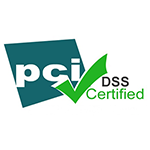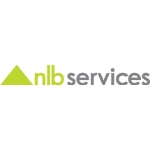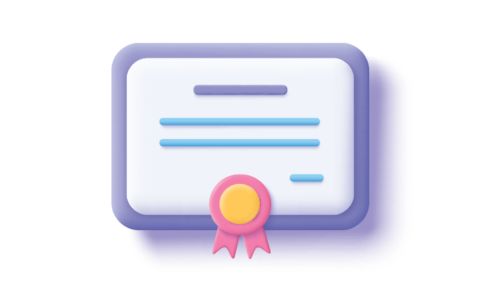© 2025 Next Level Business Services Inc. All Rights Reserved.
PEO vs EOR – Choosing the Right Partner for Your Remote Workforce
By NLB Services
As businesses navigate the complexities of today’s global workforce, they often face the decision of whether to partner with an Employer of Record (EOR) or a Professional Employer Organization (PEO). These two HR outsourcing models offer distinct solutions for managing human resources, payroll, and compliance obligations. Understanding the differences between EOR and PEO is crucial for making an informed choice that aligns with your company’s unique staffing needs and priorities. In this blog, we will discuss EOR vs PEO and understand key differences that can help you make better staffing solutions based on your unique needs.
What is Employer of Record (EOR)?
An Employer of Record (EOR) is a third-party organization that legally becomes the employer of a company’s workers in a specific country or jurisdiction. The EOR assumes responsibility for all employment-related tasks, including payroll services, human resources, tax withholding, administration, and compliance with local labor laws. This arrangement allows companies to engage talent in different locations without establishing a legal entity or dealing with the complexities of local employment regulations.
The EOR model is particularly beneficial for companies looking for global hiring to expand their global workforce or hire remote employees in countries where they do not have a physical presence. By partnering with an EOR or Employer of Record Services provider, organizations can skip the need to set up a local entity, avail quick hiring, and work with a reduced burden of employer compliance while focusing on their core operations.
What is a Professional Employer Organization (PEO)?
A Professional Employer Organization (PEO) is a firm that provides a comprehensive suite of human resources services through a co-employment relationship. In this model, the PEO becomes the employer of record for tax and insurance purposes, while the client company retains control over the day-to-day management of their employees.
The PEO is responsible for handling payroll, tax withholding, benefits administration, and compliance with employment regulations. Additionally, PEOs often offer HR expertise, risk management services, and access to employee benefits programs that may be challenging or costly for small and medium-sized businesses to obtain independently.
By outsourcing these critical HR functions to a PEO, companies can focus on their core business activities while benefiting from the PEO’s expertise, economies of scale, and shared risk mitigation strategies.
PEO vs EOR
Here is an overview to help you understand the critical difference between PEO vs EOR
| Feature | PEO (Professional Employer Organization) | EOR (Employer of Record) |
|---|---|---|
| Employer Relationship | In a PEO arrangement, there is a co-employment relationship where both the PEO and the client company share certain employer responsibilities and liabilities. | With an EOR, the EOR becomes the legal employer of the workers, assuming full responsibility for employment-related tasks and liabilities. |
| Legal Responsibility | PEOs typically provide a suite of HR services, including benefits administration, risk management, and compliance support in a shared responsibility model. | EORs primarily assume complete legal responsibility for employee payroll, tax withholding, and ensuring compliance with local employment laws in specific countries or jurisdictions. |
| HR Tasks Managed | PEO offers a broad range of HR services and handles payroll processing, tax administration, benefits administration, workers’ compensation, and risk management. | EORs primarily handle employee-related tasks like payroll processing, tax administration, benefits administration, and compliance. |
| International Capabilities | With PEO, the international capacities are limited. PEO typically requires establishing a subsidiary or partnering with a local PEO. | Choose EOR for international expansion as it can often handle hiring and managing employees in new countries without a local entity which means the possibilities are more. |
| Level of Control | PEO gives you more control over employee management and culture through a shared responsibility model. | You have less control over day-to-day employee management as EOR acts as the legal employer for the employees. |
| Cost | PEOs can be cost-effective for businesses with a larger workforce due to economies of scale. | EOR can be more expensive for small businesses due to setup fees and per-employee costs. |
| Scalability | With PEO, it is easier to scale up or down your workforce as needed. | Can be a good option for businesses with a temporary or project-based workforce for its ease in temporary workforce management. |
| Contract Flexibility | More flexible contracts with customizable service packages. | May have more standardized contracts with less flexibility. |
| Industry Specialization | Some PEOs specialize in specific industries. | EORs typically cater to a broader range of industries. |
Factors to consider when choosing between a PEO and EOR
Company Size
Small Businesses
For small businesses, choosing EORs can be a good fit owing to their flexibility and ability to handle single or small teams without minimum employee requirements. Professional Employer Organizations (PEO), on the other hand, might not be a cost-effective option due to their potential minimum employee requirements.
Mid-Sized Businesses
Mid-sized businesses can take advantage of either PEOs or EORs depending on specific needs. Organizations need to consider factors like international expansion plans and the desired level of HR support.
Large Enterprises
For such businesses, PEOs can be a better option due to their economies of scale and ability to manage complex HR tasks for a large workforce. EORs are not as cost-effective for a large local workforce but can be relevant for overseas expansion plans and managing remote teams without setting up a local office there.
Location
Domestic Operations
PEOs are usually a preferred option for managing a domestic workforce as they are well-versed in local employment laws. PEOs may be better suited for companies with a more centralized workforce, as they can provide consistent HR services across different locations
International Expansion
EORs excel in streamlining international hiring by handling legal employer responsibilities without needing a local entity setup in every country. PEOs might require establishing a subsidiary or partnering with a local PEO to operate internationally, adding complexity.
Compliance requirements can vary significantly between regions, so it’s crucial to evaluate the PEO’s or EOR’s expertise in the areas where your employees are based.
Workforce Needs
Full-Time vs. Temporary/Contract
PEOs can be a suitable option for managing a full-time workforce with benefits administration and workers’ compensation needs and HR functions.
Whereas, EORs can be a better choice for if you require a temporary or project-based workforce, due to EORs’ scalability and potential cost-effectiveness for short-term engagements.
Industry Specialization
Some PEOs specialize in specific industries, offering tailored expertise and compliance knowledge relevant to your business and can help you target the right employees.
EORs often cater to a broader range of industries but can be considered if any industry-specific compliance is crucial for your business expansion.
Additional Factors
Level of Control Desired
PEOs offer a co-employment model, allowing you some control over employee management practices as it works on shared responsibility thus shared costs and more control.
EORs take on full legal employer responsibilities, potentially reducing your control over day-to-day employee management.
Cost Structure
PEOs often have a fixed monthly fee plus per-employee charges. EORs might have setup fees and per-employee costs, which can be higher for smaller businesses. Evaluate the total cost of ownership for each option.
Scalability Needs
Both PEOs and EORs can be scalable, but If you’re focusing on growing your workforce within your country, a PEO (Professional Employer Organization) might be a better fit. But if rapid workforce growth or fluctuations are anticipated and you’re looking to expand your team internationally, an EOR is the way to go.
Technology Integration
Evaluate the PEO’s or EOR’s ability to integrate with your existing HR and payroll systems for seamless data flow and reporting.
Compliance Expertise
Assess the depth of the PEO’s or EOR’s knowledge of relevant employment laws, regulations, and best practices in your industry and locations.
Customer Service
Consider the level of support and responsiveness provided by the PEO or EOR, as well as their track record of client satisfaction
Company Reputation
Research the PEO’s or EOR’s reputation, financial stability, and industry experience to ensure a reliable and long-term partnership before making a decision.
Conclusion
In today’s dynamic business landscape, companies face the challenge of carefully navigating the complexities of managing a workforce across multiple locations and jurisdictions. Both Employer of Record (EOR) and Professional Employer Organization (PEO) models offer valuable solutions for HR outsourcing and ensuring compliance with employment regulations and labor laws. By understanding the key differences between PEO and EOR, their approaches, and assessing your company’s unique requirements, you can make an informed decision that supports your growth objectives while mitigating risks and maximizing operational efficiencies.
If your business is planning to swiftly enter new markets without setting up a legal entity, NLB Services can help. Contact our experts now to discover how our EOR services facilitate compliant employee onboarding, payroll management, and employee administration in India.
Talent Solutions








